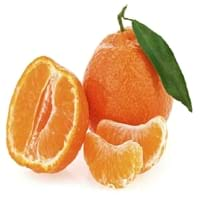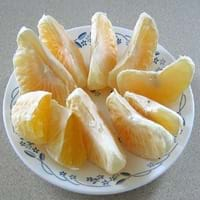Health Benefits
Cancer prevention, Heart care, Increases metabolic rate, Reduces stress
Increases metabolic rate, Lower blood pressure, Protects against kidney stone formation
General Benefits
Boosts immune system, Controls blood pressure, Digestive aid, Eye care, Helps in weight loss
Gives you energy
Skin Benefits
Brightens and lightens complexion, Treatment of acne, Treatment of dark spots
Skin cleansing
Hair Benefits
Promotes longer and healthier hair, Protects hair
NA
Allergy Symptoms
Abdominal pains, Breathing difficulty, Coughing, Diarrhea, Drop in blood pressure, Fainting, Runny nose, Skin rash, Sneezing, Swelling of mouth, tongue or lips, Vomiting
NA
Side Effects
Allergic reaction
Affects blood glucose levels, Decrease in blood sugar levels, Coagulation
Best Time to Eat
As a snack in the late afternoon, Don't consume at night and before bed, Eat the fresh ones, avoid mixing with any other foods, don't eat after meal., Morning time (before lunch)
As a snack in the late afternoon, Eat the fresh ones, avoid mixing with any other foods, don't eat after meal., Morning time (before lunch)
Vitamin B1 (Thiamin)
Not Available
Vitamin B2 (Riboflavin)
Not Available
Vitamin B3 (Niacin)
Not Available
Vitamin B5 (Pantothenic Acid)
Not Available
Vitamin B6 (Pyridoxin)
Not Available
Vitamin B9 (Folic acid)
Not Available
Vitamin C (Ascorbic Acid)
Vitamin E (Tocopherole)
Not Available
Vitamin K (Phyllochinone)
Not Available
Water Content
Not Available
Calories in Fresh Fruit with Peel
Not Available
Calories in Fresh Fruit without Peel
Not Available
Calories in Frozen Form
Not Available
Not Available
Calories in Dried Form
Not Available
Not Available
Calories in Canned Form
Not Available
Not Available
Calories in Pie
Not Available
Varieties
Clemenules or Nules and Nadorcott
NA
Color
Orange
Orange, Yellow
Inside Color
Orange
Creamy Yellow
Texture
Succulent
Succulent
Taste
Sweet, Tangy, Tart
Sweet
Soil Type
Loam, Sandy, Well-drained
Loamy
Climatic Conditions
Warm to hot climate
Warm
Facts about
- Clementine was first grown at the citrus research center in USA in 1909.
- It is called as"Christmas orange" as it's limited growing season falls during winter.
- It's a hybrid between Mediterranean and Oranges.
- The name is derived from the word "ugly" refering to the it's unpleasant appearance, with rough, wrinkled, greenish-yellow rind, wrapped loosely around the orange pulpy citrus inside.
Top Producer
Spain
Jamaica
Other Countries
Argentina, Brazil, Egypt, Italy, Japan, Morocco, Turkey, United States of America
NA, United States of America
Top Importer
United States of America
Europe
Top Exporter
Spain
Jamaica
Botanical Name
Citrus clementina
Citrus reticulata × Citrus paradisi
Synonym
Not Available
Tangelo, citrus tangelo
Subkingdom
Tracheobionta
Tracheobionta
Division
Magnoliophyta
NA
Class
Magnoliopsida
Unknown
Order
Sapindales
Sapindales
Species
C. clementina
C. reticulata × paradisi
Generic Group
Citrus fruit
Citrus fruit
Difference Between Clementine and Ugli fruit
We might think that Clementine and Ugli fruit are similar with respect to nutritional value and health benefits. But the nutrient content of both fruits is different. Clementine and Ugli fruit Facts such as their taste, shape, color, and size are also distinct. The difference between Clementine and Ugli fruit is explained here.
The amount of calories in 100 gm of fresh Clementine and Ugli fruit with peel is Not Available and 45.00 kcal and the amount of calories without peel is 47.00 kcal and Not Available respectively. Thus, Clementine and Ugli fruit belong to and category.These fruits might or might not differ with respect to their scientific classification. The order of Clementine and Ugli fruit is Sapindales and Sapindales respectively. Clementine belongs to Rutaceae family and Ugli fruit belongs to Rutaceae family. Clementine belongs to Citrus genus of C. clementina species and Ugli fruit belongs to Citrus genus of C. reticulata × paradisi species. Beings plants, both fruits belong to Plantae Kingdom.









